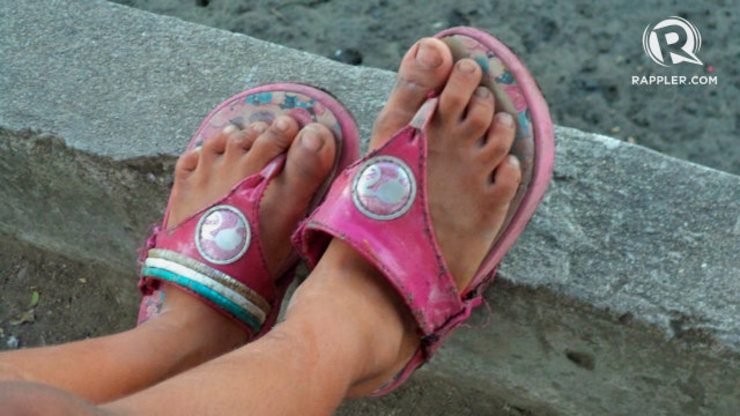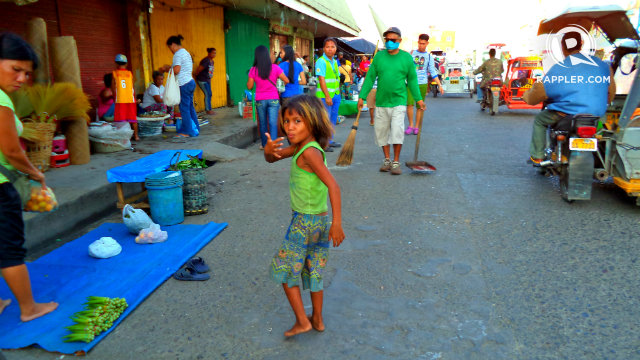SUMMARY
This is AI generated summarization, which may have errors. For context, always refer to the full article.

MANILA, Philippines —”Home is where the heart is.”
But what happens when families find home amid heartless environments?
There are over 12,000 street dwellers in Metro Manila alone as of 2013, the Department of Social Welfare and Development (DSWD) reported. The number of Metro Manila’s street families increased by 139% in the past 3 years.
Why do Filipinos end up in the streets? Most street dwellers pointed to family problems and the lack of money, while others said they lost their homes to demolitions.
The streets serve not only as their home, but also as their means of livelihood, the DSWD said.
Majority of street dwellers depend on trash for their daily survival. Next to scavenging, they earn by vending. Others work as pedicab drivers, park attendants, cemetery caretakers, barkers, construction workers, canteen helpers, and beggars.
Social Welfare Secretary Dinky Soliman called on parents to be more responsible. She observed that some force their children to work or beg, while they themselves do not work.
“Ang bata ‘di dapat iwan ng magulang sa kalye kahit sandali lang. Hindi ito tirahan o palaruan,” Soliman said. (Parents shouldn’t leave their children in the streets even for a short while. Streets are not homes or playgrounds.)
No kitchen, toilet
In 2013, there were over 1,000 children living in the streets of Metro Manila.
Some traded classrooms for the streets, opting to help their parents earn money. Meanwhile, some children use their earnings to engage in “high risk behaviors” like sniffing rugby or solvent.
“‘Yung ibang bata nagso-solvent kasi walang makain. Para ‘di maramdaman ang gutom,” a former street child shared during DSWD’s summit on street dwellers on Thursday, October 30. (Other kids sniff solvent since they have nothing to eat. It’s so they won’t feel hungry.)
The summit brought together local government units (LGUs), non-governmental organizations (NGOs), business groups, and street dwellers to discuss how to empower and address the needs of those living in the streets.
Nearly half of the street dwellers surveyed by DSWD were able to finish high school. Others, however, were unable to study due to poverty, lack of a birth certificate, bullying, or getting into the wrong “barkada” (groups).
“Some study through the Alternative Learning System,” Soliman said. She lauded parents who value their children’s education despite personal hardships.
What happens if they do go to school, but on an empty stomach?
Many families, DSWD reported, depend on feeding programs sponsored by NGOs and advocacy groups. Those with enough funds buy meals from karinderyas (canteens); those on a tighter budget settle for “kaninbaw” (rice with soup inside a plastic bag) or “bentelog” (rice with egg), costing P5 and P10 respectively.
Those with absolutely nothing, however, survive on “pagpag” (leftovers). Meals are irregular; betting on “diskarte” (style) and the kindness of passers-by.
Sanitation is another problem.
Families pay P15-P20 to use the showers or toilets in public markets, others use public restrooms like those in gasoline stations. If these options are unavailable, the streets will always be there.
Some vendors also expressed their dissatisfaction with how local authorities treat them. “Nagtitinda lang kami, pero hinuhuli kami ng pulis. Minsan hihingi pa ng P1,500. Marangal ginagawa namin. Bakit illegal vendors kami?” a young mother argued. (We just sell, but we are caught by the police. Sometimes they ask for P1,500. We work decently. Why are we called illegal vendors?)
What is being done?
“The opportunities are there, but street families feel that they are inaccessible. With the help of DSWD, stakeholders, private sector, and the Church, these programs are made accessible,” said Quezon City mayor Herbert Bautista.
DSWD piloted its “Comprehensive program for street children, families, and Indigenous Peoples” in 2011, which includes activity centers, assistance on education and livelihood, and community service programs.
Street dwellers are offered jobs as street facilitators and park attendants. Those with drug problems are taken to rehabilitation centers. (WATCH: Batang Hamog)
In 2012, the Modified Conditional Cash Transfer program for homeless street families was piloted in Metro Manila. The program provides financial assistance to families with no permanent residence to cover part of their education, health, and house rental needs.
Certain LGUs created task force groups “reaching out” to street dwellers.
These combined efforts, DSWD claimed, have taken 1,045 street families off the streets.
DSWD discourages giving alms to street kids, instead they urge the public to report these children. “Tweet us at @savestreetkids. Our teams will reach out to them, in coordination with the barangay (village),” Soliman said.
Some children are taken to centers, while others are returned to parents – but only if the parents are deemed responsible. “We counsel the parents first. We don’t return the children right away if the parents are incapable,” Soliman explained.
‘Mindset’
“Street dwellers also need to change their mindset and value system,” Bautista stressed. “Many think that Manila is the best place to be, but we know it’s not true.”
He encouraged families to stay in their provinces, instead of flocking to Manila only to end up jobless. “But we need to elevate opportunities in the provinces,” he added.
DSWD will work with the Department of Environment and Natural Resources and the Department of Agriculture in ensuring that land and farming supplies are provided to street families who wish to return to their provinces.
“But they have to promise to stay there for good, and not return to Manila,” Soliman added.
DSWD and LGUs also operate halfway houses and centers for rescued street children. Some are doing well, however, others are reported to have bad conditions.
“‘Di ko kaya ang ganitong kalakalan sa buhay. Nalagpasan ko ‘yun, pero sana di na makarating sa iba,” a former street kid said as he described his bad experiences in a government-run shelter. (I can’t endure that kind of life. I survived it, but I hope no one else experiences it.)
Bautista said government should also reform its mindset.
Children’s advocate Dr Evelyn Flordelis of Assumption College said that government-run centers should be accountable for what happens after street kids are rescued.
“Kung kinuha nila ang bata, dapat sa mas magandang lugar talaga sila mapunta,” she said. (If they take these children, they should really go to better places.) – Rappler.com
Add a comment
How does this make you feel?

There are no comments yet. Add your comment to start the conversation.